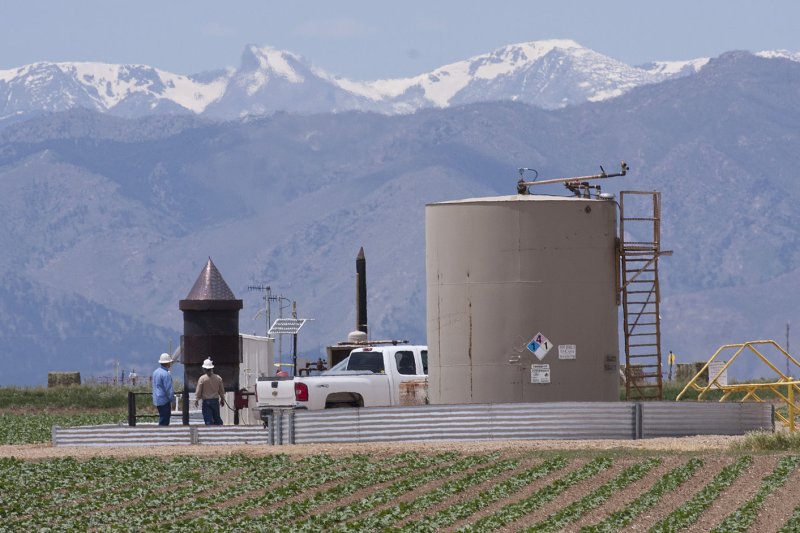U.S. shale oil production may be poised for a rebound, though short-term gains are coming from offshore and Alaska, a report from OPEC finds. File photo by Gary C. Caskey/UPI |
License Photo
Feb. 13 (UPI) -- The recovery in crude oil prices means more oil likely from U.S. shale deposits, though immediate gains are coming from offshore, OPEC said.
Economists at the Organization of Petroleum Exporting Countries said the recovery in crude oil prices since late 2016 provides support for U.S. shale oil in particular. Supply growth from non-OPEC members this year is expected primarily from Brazil, with an expected increase of 250,000 barrels of oil per day, and the United States, with an estimated gain of 240,000 bpd.
Gains in total non-OPEC supply forecasts were "made mainly based on U.S. onshore
drilling activities and more announced spending by operators on production for this year," OPEC stated in its monthly market report for February.
By OPEC's estimate, U.S. oil production in November was 8.9 million bpd, a gain of about 10,000 bpd from October, but still 4.3 percent lower year-on-year. Most of that growth was attributed to gains in the U.S. Gulf of Mexico, which recovered from a period of regular maintenance and decreased activity after the region's hurricane season.
Inland, OPEC said Texas oil production increased 0.6 percent from October, but was 6.3 percent lower year-on-year. North Dakota, the No. 2 oil producer in the United States, saw crude oil production decline 0.7 percent from October and 12.4 percent from the previous year. Alaska, meanwhile, saw modest gains in November.
"A move towards higher prices may lead to a resurgence in U.S. tight oil production from the most prolific shale regions." The Permian shale basin in particular has "remarkable potential," OPEC's report read.
Oilfield services company Baker Hughes reported 683 rigs in active service in the United States in January, up 8 percent from December and 4.4 percent higher than January 2016. Rig counts reflect exploration and production activity and serve as a loose barometer for industry confidence in a particular market.
Rig counts have yet to translate to real crude oil volumes from the United States, though federal estimates forecast 9 million bpd for 2017 and 9.5 million bpd in 2018.
Lower crude oil prices last year put pressure on state economies that rely on oil. On the broader U.S. economy, OPEC said the underlying dynamic seems robust in large part because recovery in oil prices has spilled over to the industrial sector.
On the margins, OPEC economists said there may be problems surfacing in the labor market as tighter immigration policies make it more expensive for employers to fund additional working hours.
"This could then have an effect on inflation," OPEC said.















